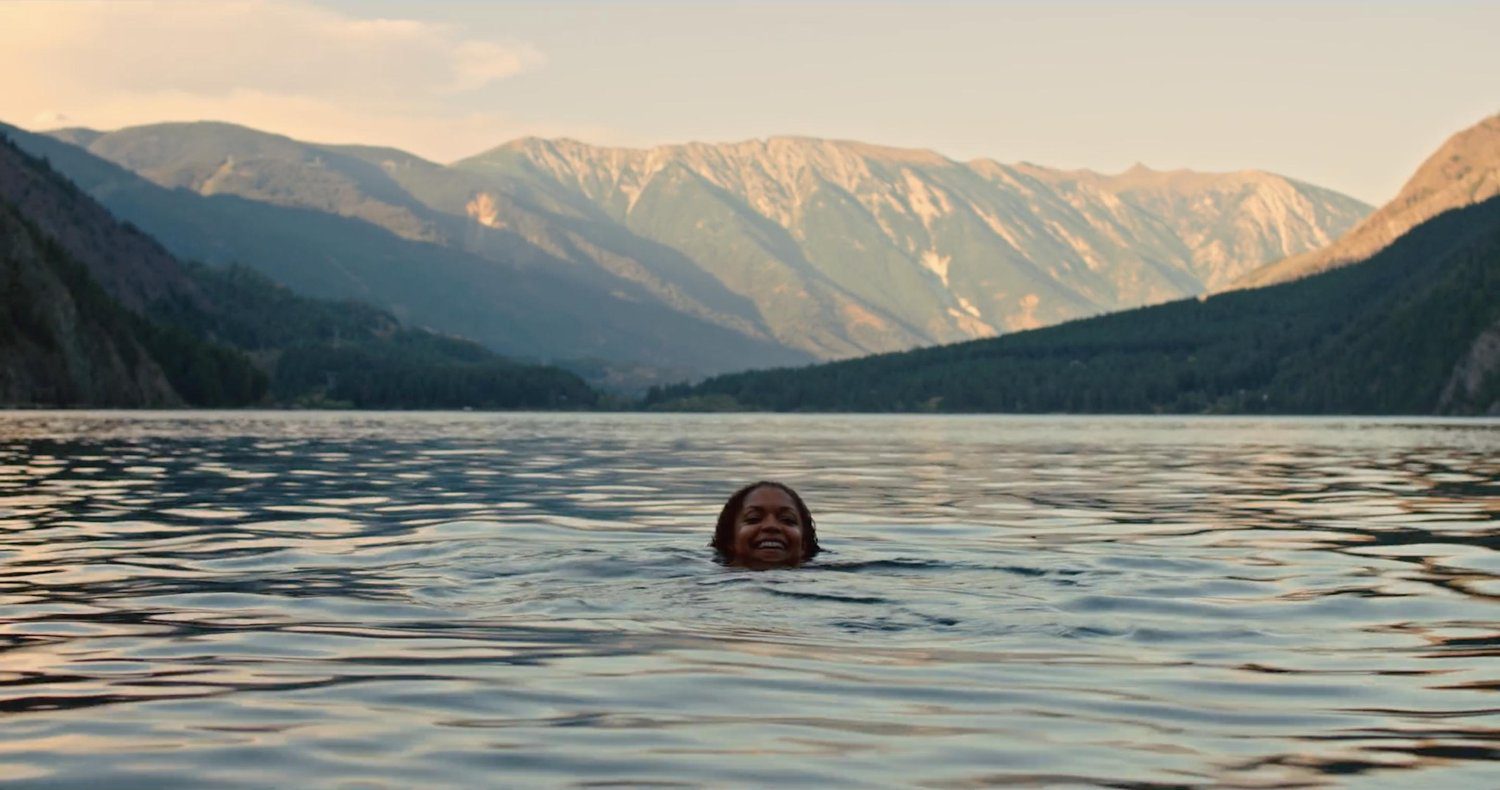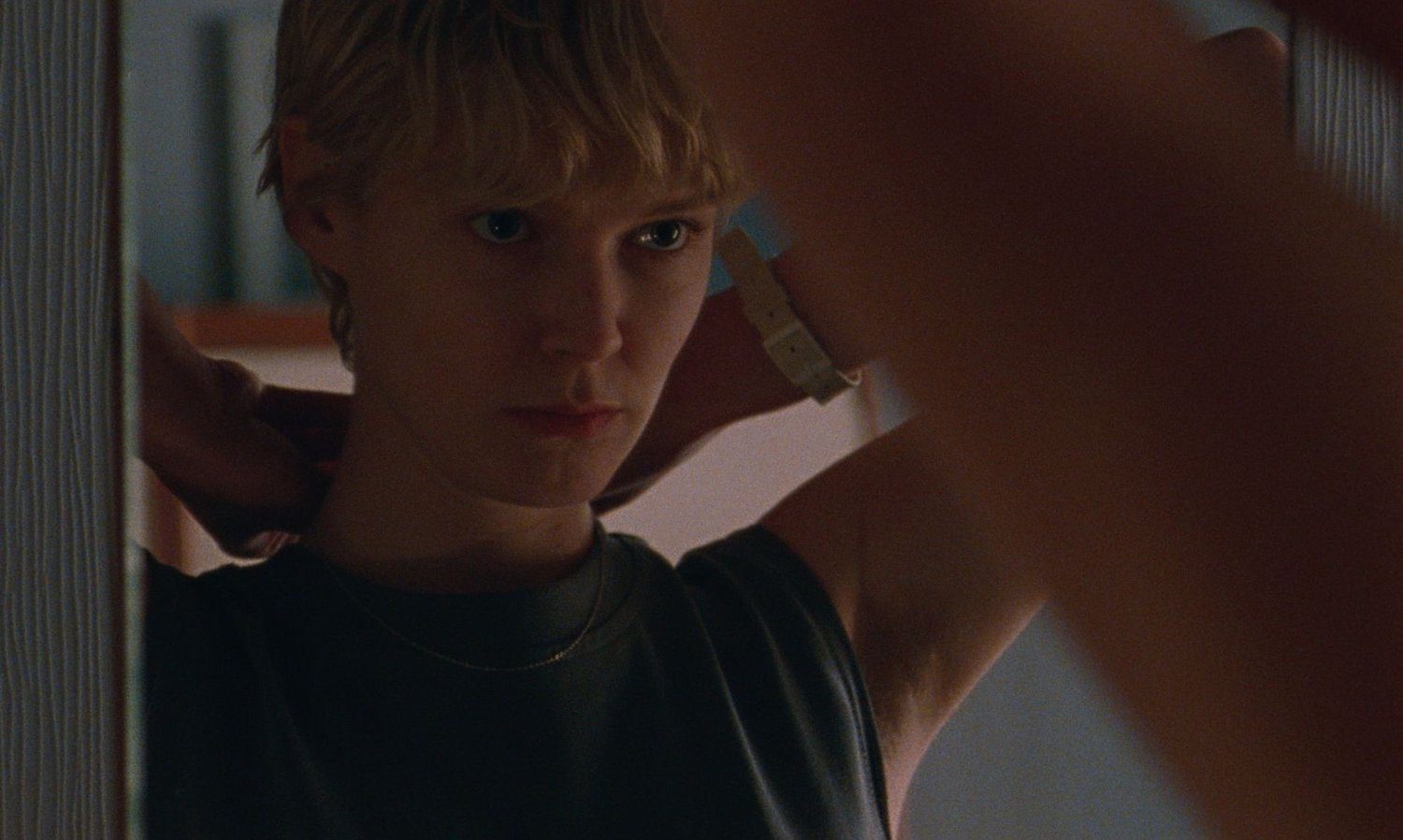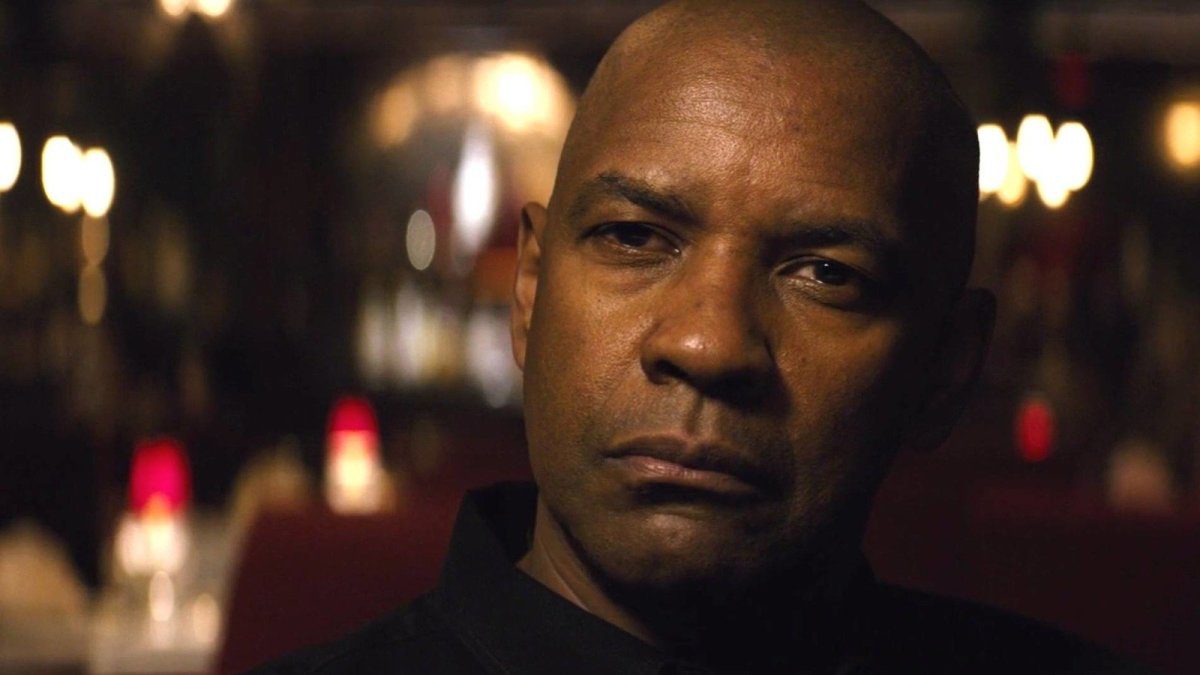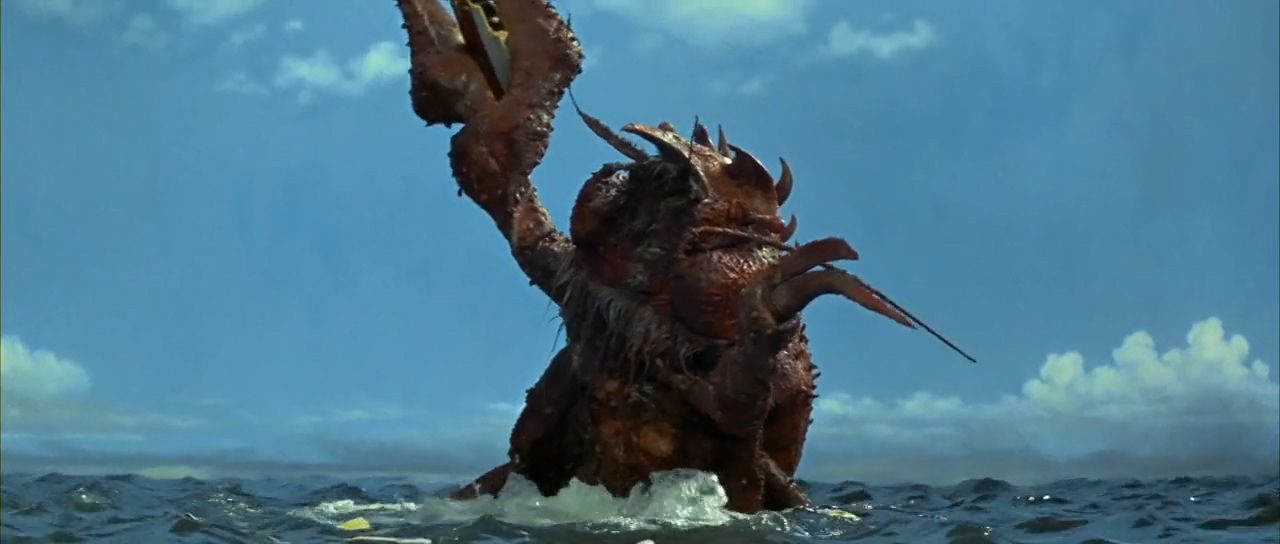
By Ben Dower
Ryota Kane (Toru Watanabe) is desperate to search for his brother Yata Kane (Toru Ibuki), who has disappeared while at sea.??He tries to join a dance contest to win a boat, but is too late.??He goes with two men who lost the dance contest to the harbour, where they sneak onto a boat.??Inside the boat they find bank robber Yoshimura (Akira Takarada) hiding, but decide to spend the night on board.
The next morning, they awake to find Ryota has stolen the boat and is searching for his brother. They get caught in a powerful storm, which washes them to Letchi Island. As they near the island, the boat is attacked and destroyed by a giant lobster named Ebirah, but they all make it ashore safely.
On the island, they find a secret terrorist organization called Red Bamboo that is producing nuclear weapons. Red Bamboo is enslaving people from Infant Island and using them to make a yellow liquid that keeps Ebirah away from their ships.
A woman from Infant Island named Daiyo (Kumi Mizuno) manages to escape her Red Bamboo captors and joins with Ryota and his friends. They find Godzilla sleeping on the island and awaken him. Godzilla confronts Ebirah, and after a quick skirmish the two monsters go their separate ways.
Yata is found and the friends come up with a plan to sabatoge Red Bamboo, free the captured Infant Islanders, and escape Letchi Island. The enslaved Infant Islanders create a fake yellow juice that won?t repel Ebirah. Godzilla rampages through Red Bamboo?s base, activiating a nuclear self-destruct sequence. As Red Bamboo flees the island, Ebirah attacks and sinks their boat, the fake yellow liquid doing nothing to stop him.
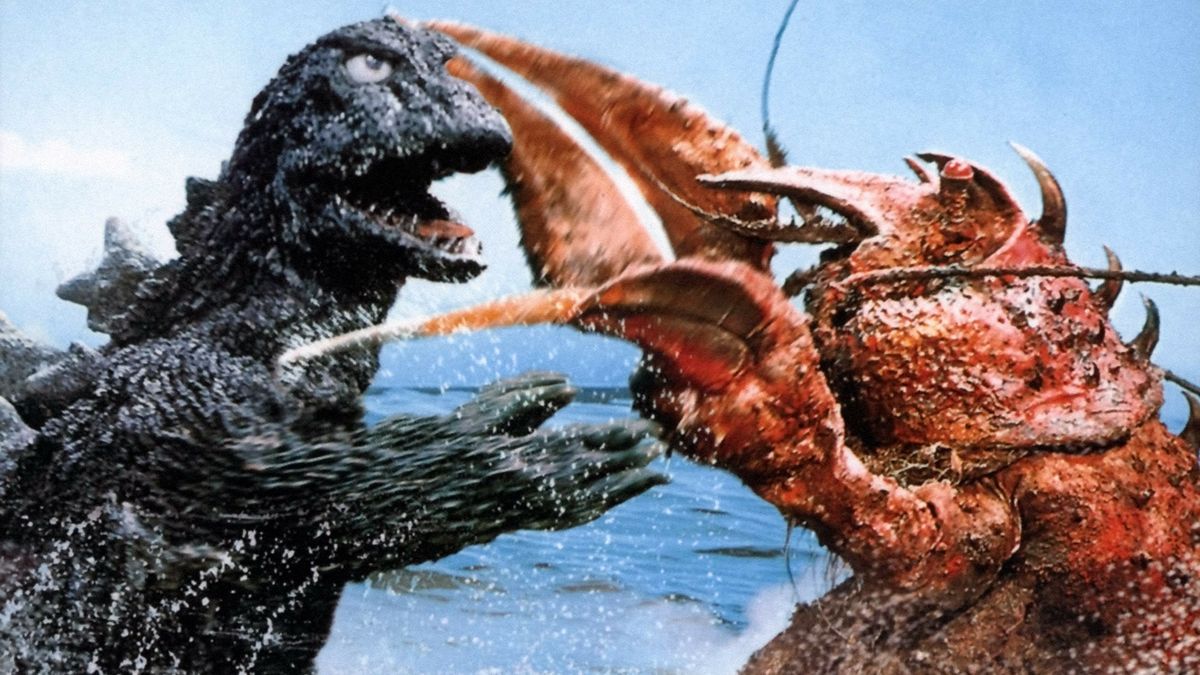
Godzilla fights Ebirah once more, ripping the giant crustacean?s claws off, and Mothra arrives in time to fly the film?s heros and Infant Islanders to safety. Godzilla also manages to escape the island just before it is destroyed by Red Bamboo?s nuclear bomb.
After the interplanetary special effects tour-de-force that was Invasion of Astro-Monster, Ebirah, Horror of the Deep feels a lot more low key. The film is set primarily on tropical island locations and has a much simpler plot than the two Ghidorah movies. There are no scenes of major urban destruction, and both battles between Godzilla and Ebirah take place primarily in the water, something entirely new for the Godzilla series.
Part of the reason for the simplified special effects scenes is due to budget restraints. In January 1966, a new monster television show began airing called Ultra Q. Ultra Q was followed up in July 1966 by Ultraman, the first in a series of TV programs featuring a transforming giant alien that fights giant monsters. With televisions now common in Japanese households and giant monsters regularly on TV, people had less of a need to go to the theatre to see giant monsters on the screen. Add to that the fact Ebirah, Horror of the Deep was not a partially American funded co-production like Invasion of Astro-Monster, and it?s easy to understand why Toho was cutting budgets on their Godzilla pictures.
That?s not to say Ebirah, Horror of the Deep is a bad movie, because it isn?t. What Ebirah, Horror of the Deep lacks in big budget monster action, it makes up for in human action. The film has a real James Bond feel to it, with the over-the-top terrorist organization Red Bamboo pursuing our main characters all over Letchi Island. The whole movie is just a lot of fun, from the dance contest at the beginning to the nuclear explosive climax.
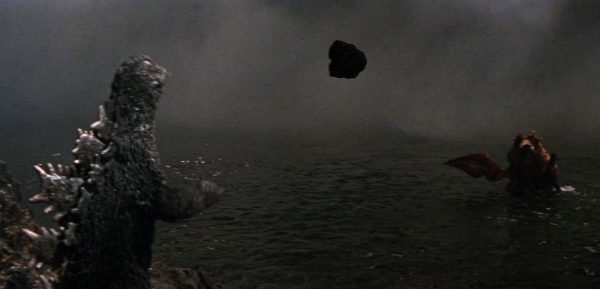
Interestingly, Ebirah, Horror of the Deep was initially planned to be a King Kong movie. The film was intended to be a co-production with Rankin/Bass Productions as a tie-in with their King Kong cartoon series. Rankin/Bass, however, apparently rejected the script, so Toho just replaced King Kong with Godzilla and produced the film themselves. Clues that this was intended to be a King Kong movie still remain in the finished film, such as the scene where Godzilla becomes fixated on Daiyo at one point. Toho would eventually produce King Kong Escapes with Rankin/Bass the following year.
While the whole film is pretty fast-paced and light-hearted, there is still some social commentary present. The ?Red? in Red Bamboo is clearly an allusion to communism and bamboo is a plant most commonly associated with pandas and China. Red Bamboo?s Captain Yamoto (Akihiko Hirata) also wears an eye patch with a dragon on it. In the mid-1960s, China became a nuclear-armed state. Red Bamboo is clearly meant as a commentary on China?s nuclear weapons development.
Ebirah, Horror of the Deep was released directly to television in the United States in 1967 as Godzilla vs. The Sea Monster by Walter Reade Organization. It was edited slightly and given an English dub by Titra Studios in the United States. This version was the only version distributed in North America for decades.
In 2005, TriStar released Toho?s international version of Ebirah, Horror of the Deep on DVD. This version had the onscreen titles changed to English, and viewers could choose to watch it with the original Japanese audio or Toho?s own English dub, which was produced at Frontier Enterprises in Japan. The international version with the same two audio options was released on DVD and Blu-ray by Kraken Releasing in 2014. Both the TriStar and Kraken releases are out of print. Only the original Japanese version of Ebirah, Horror of the Deep is currently available, and it is as part of The Criterion Collection?s Godzilla: The Showa-Era Films, 1954-1975 Blu-ray set featuring the first 15 Godzilla movies.

